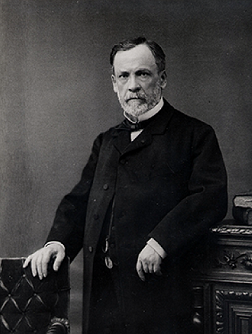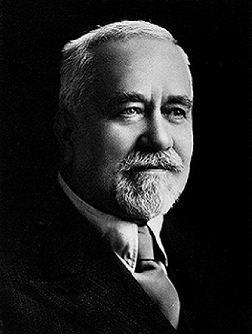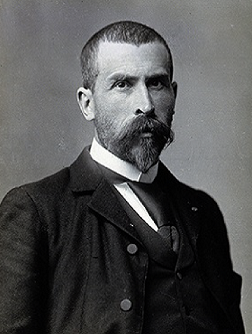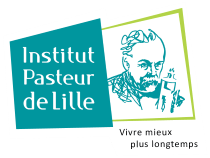Our history
Inaugurated in 1899, the Institut Pasteur de Lille today boasts more than 120 years of history: 120 years of innovation, research and the fight against disease. 120 years of commitment to the service of health, faithful to Pasteurian thought, to the wishes of the pioneers of the Institute: Pasteur, Calmette, Guérin.
It is this story, strewn with doubts, efforts, major discoveries and successes, which lays the foundations on which the future of the Institut Pasteur de Lille is being built through its strategic project.

More than 120 years of discoveries, research and innovation
LOUIS PASTEUR

Louis Pasteur and Lille
Learn more
After a brilliant student career, Louis Pasteur entered the École normale supérieure and chose to study the optical activity for the polarized light of crystals of tartaric acid and tartrate derived from the fermentation of wine. He shows in his Thesis of Science defended in 1847, that living organisms produce optically active asymmetric crystals, which differentiates organic matter from the mineral world.
He began his career as a substitute professor of chemistry at the Faculty of Strasbourg, then he was appointed at the age of 32, the first dean of the Faculty of Sciences which had just been created in Lille in 1854. It is in our city that, working at the request of the brewers of the region, Pasteur will make, between 1854 and 1857, fundamental observations on alcoholic fermentations which will give birth to microbiology and the discovery of the role of germs. in infections.
ALBERT CALMETTE

The discover of BCG in Lille
Learn more
Very quickly, Albert Calmette became interested in tuberculosis and was joined by the veterinarian Camille Guérin. A key research object that will occupy them for twenty years to achieve the discovery of an effective vaccine that bears their name: BCG (Bacille de Calmette et Guérin) developed in the premises of the Pasteur Institute in Lille.
From 1905 to 1919, the two researchers worked on this vaccine which was used with success for the first time in young children in 1921. In 1928, vaccination with BCG was widely distributed throughout the world.
Even today, the Institute’s researchers continue to fight tuberculosis and follow in Calmette and Guérin’s footsteps. Camille Locht’s team is working on the development of a booster vaccine that would prolong the effectiveness of the initial BCG and a treatment to make Koch’s bacillus more sensitive to antibiotics in order to reduce the doses and the effects associated secondary.
ÉMILE ROUX

In the service of public health
Learn more
In 1894, the North of France was hit hard by a serious diphtheria epidemic. A delegation from the municipality went to Paris to consult Louis Pasteur on the fastest way to implement the manufacture of the new serum which has just been developed by Emile Roux at the Institut Pasteur (created in 1888.) Pasteur agrees to create a laboratory in Lille for the production of diphtheria serum. This temporary laboratory was created in 1894 at the Halle aux Sucres in Old Lille.
Louis Pasteur accepts, just before his death in 1895, that this laboratory bears his name and he chooses Albert Calmette as first director.
The Institut Pasteur de Lille was built in particular thanks to the city of Lille, the people of Nord-Pas-de-Calais and the generosity of Albert Calmette who will donate the proceeds from the sale of some of his patents. Subsequently, Albert Calmette will develop the BCG in these premises at the beginning of the 20th century with the help of Camille Guérin.
